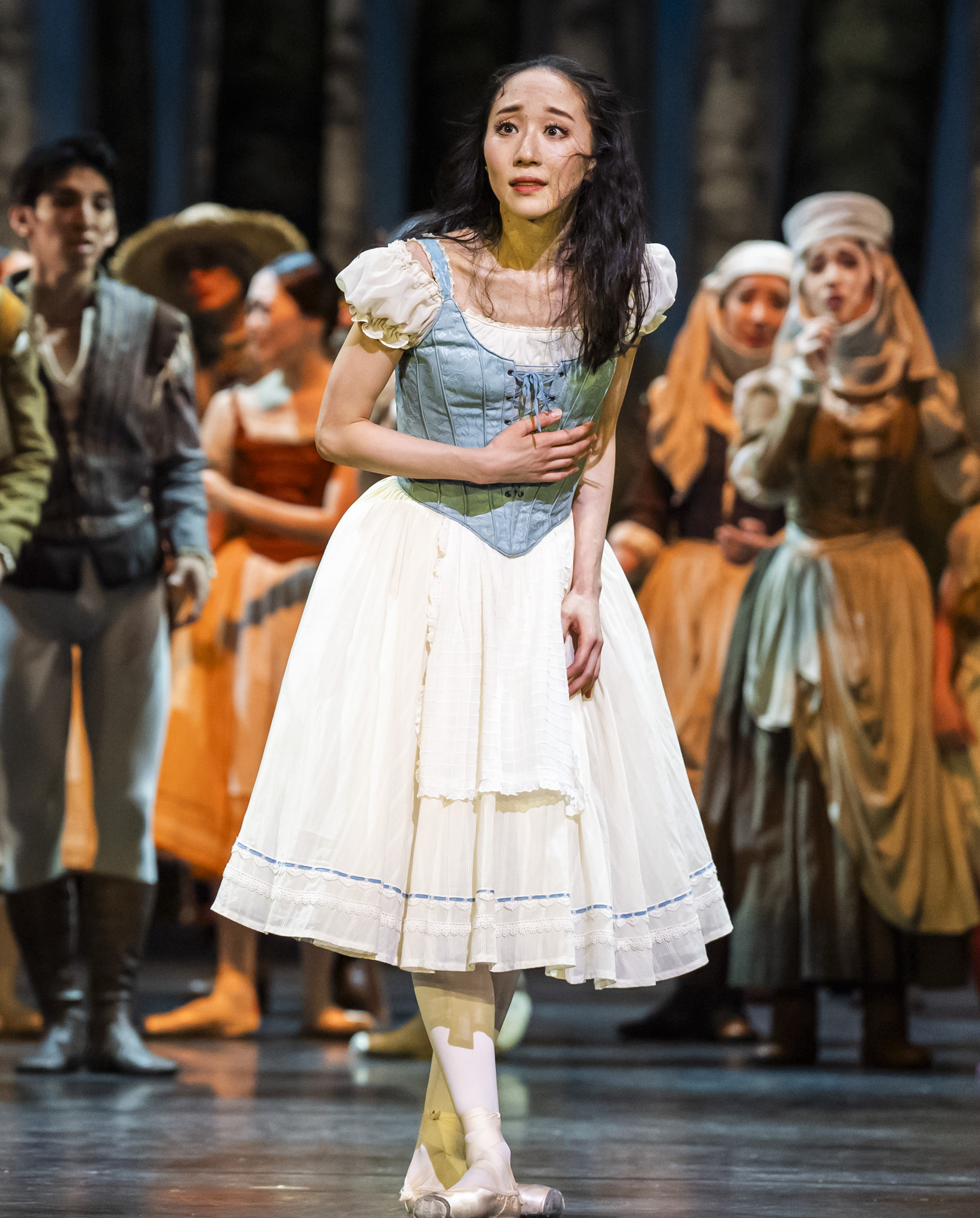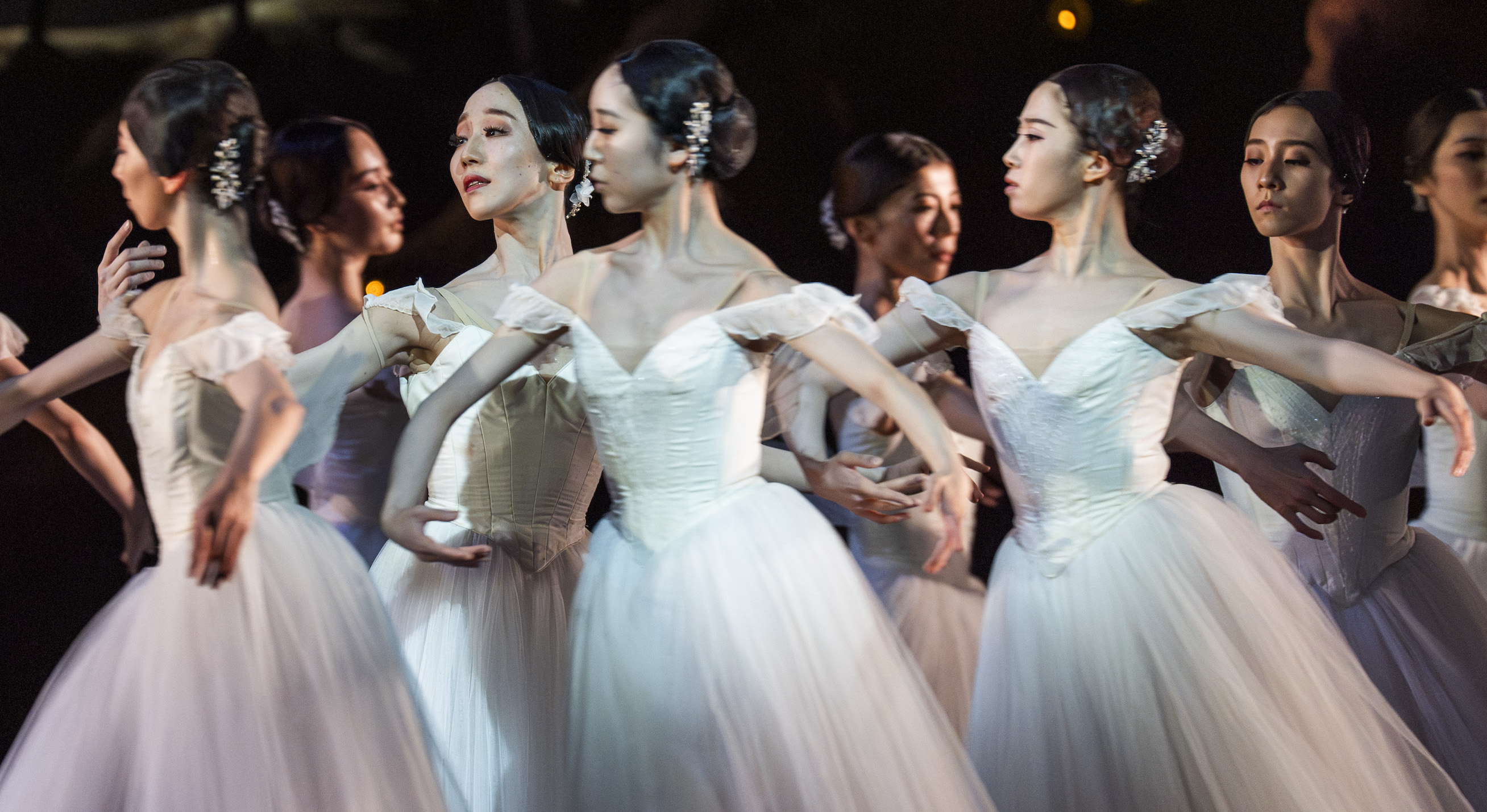Giselle, National Ballet of Japan review - return of a classic, refreshed and impeccably danced | reviews, news & interviews
Giselle, National Ballet of Japan review - return of a classic, refreshed and impeccably danced
Giselle, National Ballet of Japan review - return of a classic, refreshed and impeccably danced
First visit by Miyako Yoshida's company leaves you wanting more

A new Giselle? Not quite: the production that Japan’s national company has brought over for its first British visit isn’t a radical Akram Khan-style makeover. What it offers is a tasteful refreshing of a great classic, like meeting an old friend with a new haircut.
This is a Giselle with many local connections. Behind it is the company’s artistic director, Miyako Yoshida, a favourite principal at both Birmingham Royal Ballet and the Royal Ballet, where she danced the title role many times. Staging and additional steps are by the Royal Ballet dancer turned choreographer Alastair Marriott, assisted by another Royal Ballet alumnus, Jonathan Howells; set and costumes are by Dick Bird, lighting by London-based Rick Fisher. And in the pit is the Royal Ballet Sinfonia, conducted by Paul Murphy.
Those familiar with the Royal Ballet production may feel Yoshida hasn't altered the piece that much. The basic shape of the storyline is the same: sunny peasant girl goes mad with heartbreak and dies when she discovers her lover is really an aristocrat with a fiancée, then, as a ghost, protects him from vengeful spirits intent on making him dance to death. The first act, barring the looming birch-tree forest, is set in a familiar half-timbered medieval village. Yoshida has added a cherubic boy representing Bacchus, whose festival Giselle’s village is celebrating, but little else.
 What stands out in her production is the level of artistry she has created in her company since she took over in 2020. The first night’s Giselle and Albrecht, Yui Yonezawa and Shun Izawa, were models of effortless competence, light and playful in their happier Act 1 moments, serenely tragic in Act 2, executing their big moments perfectly. Yonezawa's mad scene (pictured right), hair loosened and dishevelled, was a poignant and plausible study in heartbreak, without a trace of melodrama. Izawa was especially boyish and endearing in the sequence with the flower petals, where he rigs the game to “prove” he loves her, and is appropriately distraught at her death.
What stands out in her production is the level of artistry she has created in her company since she took over in 2020. The first night’s Giselle and Albrecht, Yui Yonezawa and Shun Izawa, were models of effortless competence, light and playful in their happier Act 1 moments, serenely tragic in Act 2, executing their big moments perfectly. Yonezawa's mad scene (pictured right), hair loosened and dishevelled, was a poignant and plausible study in heartbreak, without a trace of melodrama. Izawa was especially boyish and endearing in the sequence with the flower petals, where he rigs the game to “prove” he loves her, and is appropriately distraught at her death.
The dancers performing the Act 1 “peasant” pas de deux (a remodelling of the pas de six), Risako Ikeda and Shunsuke Mizui, were equally impressive, lively and athletic, with rock-steady technique but also a nimbleness that could tackle anything the variations required of them. Footwork throughout the company, especially their bourrées en couru, is exquisite; ditto its acting, which employs many of the conventional mimed gestures but adds a layer of realistic psychological detail. Giselle’s devoted local suitor Hilarion (Masahiro Nakaya) and nervous mother Berthe (Yuna Seki) are projected as fully formed individuals without descending into stereotypes. Tempi were a tad stop-start at times on opening night, but the viola soloist accompanying Giselle’s Act 2 slow solo was exemplary.
Even more impressive as actors were Ayako Ono and Yudai Fukuoka on the second night. Ono's Giselle has a delicate vulnerability, ideal for this tragic plotline; she visibly lost her mind when Albrecht's betrayal became clear. And Fukuoka's Albrecht perfectly caught the ambiguity of the character, an ignoble noble, visibly shifty, but genuinely pole-axed by Giselle's death. Both he and Izawa have the true stature and grace of the danseur noble, while the women combined wit and bounce with the dignified control their slow Act 2 solos require.
Sealing the deal, though, is the corps. In Act 1, as peasants dressed in various russet shades, or In darker colours as the male followers-on at the hunt, they are given a lot to do, all of it exuberantly executed. As a group they leap and spin in unison. When they form lines that cross through each other – a faster version of the Wilis sequence in Act 2, who do the same in hopping arabesques – they are moving so rapidly, they almost become a blur. Marriott also employs a formation where the front rank of the corps is joined by the others, line by line, each longer than the one before, as a thrilling visual correlative to the swelling music.
This well drilled uniformity is even more obvious when the Wilis arrive: one of the best corps I have seen (pictured bottom). As with the Russian companies, the dancers are precision-matched in height and build, and they move as one – except for an unusual moment rather like a Mexican wave where they twist around one by one, then raise their arms in a lovely ripple effect. Their Myrtha on both nights was Akari Yoshida, who made this strenuous role look easy; she projected her power and anger without losing her gracefulness. 
The relative newness of this production is especially obvious in Bird’s exceptional costumes. The aristocrats in the hunting party sport opulent fur-trimmed robes in dark neutrals, with a radiant pink and red palette for Albrecht’s regal fiancée that commands the attention. Similarly, Giselle and her mother stand out in traditional white and blue among Act 1’s autumnal tones. In Act 2, adding to the Wilis’s impact are their whisper-light Romantic tutus, whose ample gauzy layers fly up around them, enhancing the sense of their lack of corporeality.
The only slight disappointment in this fine production is the decision to stage Act 2 in a weird hollow on the edge of the woods, where a handful of trees and ridges are dotted with multiple crosses. Bird has raised up the trees on one side so that the dancers can enter and exit comfortably through their roots, leaving a wide-open space for the performers in the middle, with the cliff Hilarion will be driven to jump off visible in the distance. But I missed the sense that we are deep in the dark heart of an ancient forest, where the terrifying spirits of women who have been jilted and died before their wedding day gather to exact their revenge on men. It’s eerie without being claustrophobic. (Pictured above, Yui Yonezawa)
The little trills signalling the Wilis’ presence, thrilling little flashes of white among the trees in the Royal's version, aren’t possible here; instead, lightning flashes ominously in the background. Myrtha, first to arrive, is given a suitably ghoulish entrance, rising up on some kind of hydraulic lift on top of a bank and pointing menacingly at the hapless Hilarion, but her veiled followers simply walk slowly on at either side of the stage, rather than apparently appearing from their graves.
The Wilis amply fill the available space, though as Giselle performs her solos in it, begging for Albrecht to be spared, Myrtha is positioned far over to one side, where her imperious raised-hand gestures saying “no” don’t seem as focal as usual. Yonezawa’s acting is perhaps a little too serene and contained here, though Ono gave her Giselle an ideal balance of yearning and courage, now expressing physically her love for Albrecht in a way she couldn't when alive. Yoshida has one more tweak in these final moments, despatching the Wilis as Giselle magically fades back into her grave. The programme synopsis has it that she, like Albrecht, has been spared, no longer doomed to death-long membership of the Wilis, and is now a spirit at peace. It's a fitting generous moment in what was all too short a visit, and a fine introduction to a company of excellent actor-dancers. Long may they return with more of their repertoire.
Yoshida has one more tweak in these final moments, despatching the Wilis as Giselle magically fades back into her grave. The programme synopsis has it that she, like Albrecht, has been spared, no longer doomed to death-long membership of the Wilis, and is now a spirit at peace. It's a fitting generous moment in what was all too short a visit, and a fine introduction to a company of excellent actor-dancers. Long may they return with more of their repertoire.
rating
Explore topics
Share this article
Add comment
The future of Arts Journalism
You can stop theartsdesk.com closing!
We urgently need financing to survive. Our fundraising drive has thus far raised £49,000 but we need to reach £100,000 or we will be forced to close. Please contribute here: https://gofund.me/c3f6033d
And if you can forward this information to anyone who might assist, we’d be grateful.

Subscribe to theartsdesk.com
Thank you for continuing to read our work on theartsdesk.com. For unlimited access to every article in its entirety, including our archive of more than 15,000 pieces, we're asking for £5 per month or £40 per year. We feel it's a very good deal, and hope you do too.
To take a subscription now simply click here.
And if you're looking for that extra gift for a friend or family member, why not treat them to a theartsdesk.com gift subscription?
more Dance
 'We are bowled over!' Thank you for your messages of love and support
Much-appreciated words of commendation from readers and the cultural community
'We are bowled over!' Thank you for your messages of love and support
Much-appreciated words of commendation from readers and the cultural community
 Peaky Blinders: The Redemption of Thomas Shelby, Rambert, Sadler's Wells review - exciting dancing, if you can see it
Six TV series reduced to 100 minutes' dance time doesn't quite compute
Peaky Blinders: The Redemption of Thomas Shelby, Rambert, Sadler's Wells review - exciting dancing, if you can see it
Six TV series reduced to 100 minutes' dance time doesn't quite compute
 Giselle, National Ballet of Japan review - return of a classic, refreshed and impeccably danced
First visit by Miyako Yoshida's company leaves you wanting more
Giselle, National Ballet of Japan review - return of a classic, refreshed and impeccably danced
First visit by Miyako Yoshida's company leaves you wanting more
 Quadrophenia, Sadler's Wells review - missed opportunity to give new stage life to a Who classic
The brilliant cast need a tighter score and a stronger narrative
Quadrophenia, Sadler's Wells review - missed opportunity to give new stage life to a Who classic
The brilliant cast need a tighter score and a stronger narrative
 The Midnight Bell, Sadler's Wells review - a first reprise for one of Matthew Bourne's most compelling shows to date
The after-hours lives of the sad and lonely are drawn with compassion, originality and skill
The Midnight Bell, Sadler's Wells review - a first reprise for one of Matthew Bourne's most compelling shows to date
The after-hours lives of the sad and lonely are drawn with compassion, originality and skill
 Ballet to Broadway: Wheeldon Works, Royal Ballet review - the impressive range and reach of Christopher Wheeldon's craft
The title says it: as dancemaker, as creative magnet, the man clearly works his socks off
Ballet to Broadway: Wheeldon Works, Royal Ballet review - the impressive range and reach of Christopher Wheeldon's craft
The title says it: as dancemaker, as creative magnet, the man clearly works his socks off
 The Forsythe Programme, English National Ballet review - brains, beauty and bravura
Once again the veteran choreographer and maverick William Forsythe raises ENB's game
The Forsythe Programme, English National Ballet review - brains, beauty and bravura
Once again the veteran choreographer and maverick William Forsythe raises ENB's game
 Sad Book, Hackney Empire review - What we feel, what we show, and the many ways we deal with sadness
A book about navigating grief feeds into unusual and compelling dance theatre
Sad Book, Hackney Empire review - What we feel, what we show, and the many ways we deal with sadness
A book about navigating grief feeds into unusual and compelling dance theatre
 Balanchine: Three Signature Works, Royal Ballet review - exuberant, joyful, exhilarating
A triumphant triple bill
Balanchine: Three Signature Works, Royal Ballet review - exuberant, joyful, exhilarating
A triumphant triple bill
 Romeo and Juliet, Royal Ballet review - Shakespeare without the words, with music to die for
Kenneth MacMillan's first and best-loved masterpiece turns 60
Romeo and Juliet, Royal Ballet review - Shakespeare without the words, with music to die for
Kenneth MacMillan's first and best-loved masterpiece turns 60
 Help to give theartsdesk a future!
Support our GoFundMe appeal
Help to give theartsdesk a future!
Support our GoFundMe appeal

Comments
Myrtha is different on the
Myrtha is different on the first night and the second. The second night Myrtha is Yui Negishi.